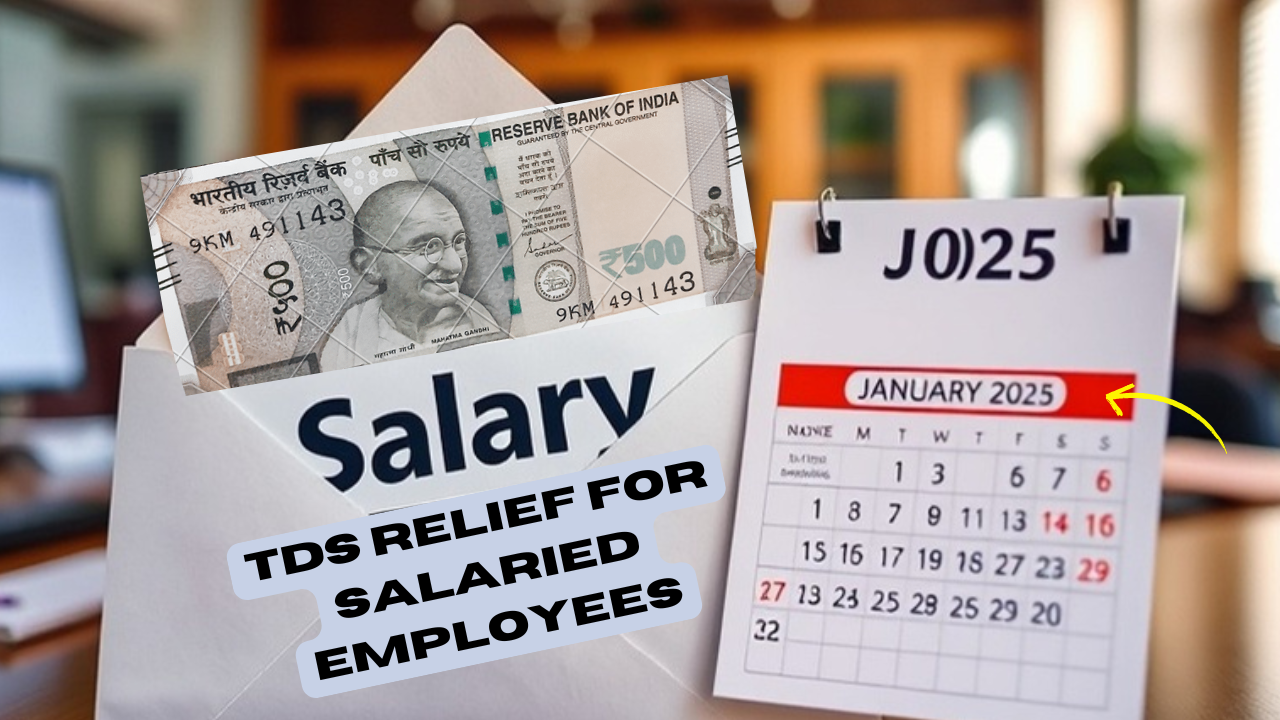Starting January 1, 2025, salaried individuals in India can look forward to a significant improvement in how their tax liabilities and TDS Relief are managed. A new provision will ensure that their tax statements reflect the net TDS (Tax Deducted at Source) and TCS (Tax Collected at Source) benefits on eligible income, simplifying the process and potentially boosting disposable income. Let’s break this down and explore what it means for taxpayers.
Understanding TCS and TDS Relief
TDS and TCS are mechanisms used by the government to collect taxes at the source of income or expenditure.
- TDS Relief is deducted directly from your income by the payer—typically your employer in the case of salaried individuals—and deposited with the government on your behalf.
- TCS applies to specific transactions where a seller collects tax at the time of sale and deposits it with the government.
These taxes are reflected in Form 26AS, a comprehensive annual tax statement, and the Annual Information Statement (AIS). Taxpayers can claim credit for the amounts deducted or collected while filing their income tax returns.
The Current Scenario of Salary
Currently, the TDS mechanism operates on gross income, meaning taxes are deducted without accounting for certain eligible deductions or exemptions. For instance:
- Contributions to tax-saving instruments such as Public Provident Fund (PPF), National Pension System (NPS), or Employees’ Provident Fund (EPF) are deducted from your gross income only at the time of filing your returns.
- Other exemptions, such as house rent allowance (HRA) or deductions under Section 80C, are considered only after providing detailed proofs to your employer or during tax return filing.
This results in a higher initial tax outgo, affecting the cash flow of salaried individuals. Any refund due from over-deduction is adjusted only when the tax return is processed, which can take months.
What Changes from January 1, 2025?
From 2025 onwards, the TDS Relief mechanism will consider the net taxable income after factoring in eligible deductions and exemptions. This means:
- Net TDS Calculation: Employers will calculate TDS on the income that remains after accounting for exemptions and deductions such as HRA, Section 80C investments, or medical insurance premiums under Section 80D.
- Streamlined Tax Credit: Your tax statement will automatically reflect the net TDS and TCS amounts, reducing discrepancies and improving transparency.
- Real-Time Benefits: Taxpayers will no longer need to wait until the end of the financial year or during the tax return process to receive refunds for over-deducted taxes.
Benefits for Salaried Individuals
The introduction of this change is poised to bring multiple benefits:
- Improved Cash Flow: By deducting tax on net income, individuals will have more money at their disposal during the year. This can help with monthly expenses, savings, or investments.
- Simplified Tax Compliance: The need for reconciliation between Form 16, Form 26AS, and AIS will be reduced, as the figures will align more closely.
- Fewer Refund Delays: Over-deduction issues leading to refunds will be minimized, ensuring taxpayers do not have to wait months for their money to be returned.
- Increased Transparency: A clearer and more accurate reflection of tax liabilities in statements will boost confidence among taxpayers.
Steps to Prepare for the Change
To make the most of this new provision, salaried individuals should take some proactive steps:
- Ensure Proper Documentation: Maintain records of all eligible deductions and exemptions, such as investment proofs, rent receipts, and insurance premiums. Share these promptly with your employer during the declaration process.
- Stay Updated: Follow notifications from the Income Tax Department or consult your employer’s HR team to understand how the changes will be implemented in your organization.
- Review Your Tax Planning: Assess your current tax-saving strategies to ensure you’re making optimal use of deductions and exemptions. Consider consulting a tax advisor if needed.
- Monitor Your Statements: Post-implementation, review your Form 26AS and AIS periodically to ensure accuracy and compliance.
Potential Challenges
While the changes aim to simplify the tax process, there may be initial hiccups:
- Implementation Gaps: Employers may need time to adapt their payroll systems to the new mechanism, leading to potential errors in the early stages.
- Increased Responsibility: Employees must ensure accurate declarations of exemptions and deductions to their employers, as mistakes could lead to under-deduction or penalties.
- Communication Barriers: Not all taxpayers may fully understand the revised process, necessitating greater awareness campaigns by the government.
Conclusion
The upcoming changes to TDS and TCS mechanisms from January 1, 2025, mark a progressive step in India’s tax administration. By reflecting net taxable income in tax statements, the government aims to reduce taxpayer burdens, improve compliance, and enhance transparency.
For salaried individuals, this means better cash flow, fewer hassles, and a more accurate tax-paying experience. As the implementation date approaches, staying informed and proactive will be key to reaping the full benefits of this reform.




